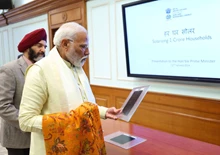
It is very alarming that the Public Sector Life Insurance Company`s collection of LIC premium in 2017-18 has dropped to 69 percent in comparison to 75 percent in the year 2013-14! The loss of business is due to private players in the insurance sector.
According to the IRDA data, in the first nine months of the current year 2018-19, based on new business premium, LIC’s market share stood at 66.49 percent. In this period, the first-year premium collected across single and group policies by private life insurers saw an increase of 23 percent year on year, while LIC’s dropped 5 percent.
Among the private sector players, HDFC Life, SBI Life and ICICI Prudential Life lead the pack in terms of market share.
Smaller private insurance companies including Aditya Birla Sun Life, Tata AIA Life, Bharti Axa Life, Edelweiss Tokio Life and India First Life have also seen a significant jump in premium collection in the first nine months of 2018-19.

Why LIC losing top position in the life insurance space can be attributed to a variety of factors.
While private insurance companies, over the last 10 years, have ramped up their online product portfolio and have come up with competitive rates, LIC has failed to keep up.
Though it launched its ‘e-term’ life insurance policy in 2014, it was way too expensive compared to similar plans from its competitors, and hence, failed to attract investors.
IRDAI data show that 10.9 percent of the business of private insurance companies came through the direct (online) route in 2017-18. For LIC, this was just 1.47 percent.
Private insurance companies rely more on corporate and bank tie-ups to distribute their products, but LIC is still largely dependent on its network of agents. The insurance behemoth has about 11.48 lac agents (March 2018) – the largest network for any life insurance company. It gets about 95.6 percent of its individual business from agents. The private sector, on the other hand, has a total agent count of 9.3 lac, with individual agents bringing 27.8 percent of the business. Other insurers get a major chunk of their business from corporate agents: 57 per- cent. Further, the loss in market share can be attributed to LIC’s absence in the ULIP segment, say market observers.
In 2017-18, unit-linked insurance products collected a premium of ₹64,850 crore, which is a jump of 22 percent from the previous year. Traditional plans, on the other hand, saw a muted 7.75 percent growth in premium. LIC has a portfolio that is overweight on traditional plans. After withdrawing its ULIPs in 2013 following new regulations for unit-linked plans, LIC launched its new ULIP – New Endowment Plus – in 2015.











